Review: Nokia 5230
Score:
74%
Following on from his tour of the USA with the Nokia 5230/Nuron, Ewan delivers his final verdict on Nokia's newest and cheapest S60 5th Edition smartphone.
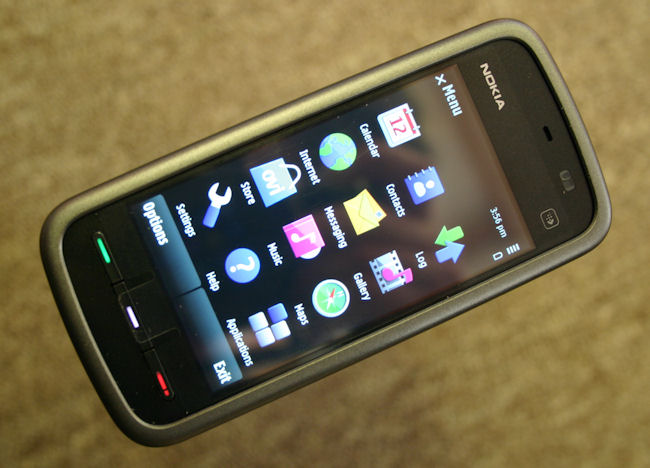
The Nokia 5230 breaks new ground for Nokia by being one of their first S60 handsets that has significant reach into the low-end of the market. Available to buy unlocked for under £100 (if you shop around), and packaged up for T-Mobile in the US as a $70 contract or $180 pre-pay handset (locked to the network, admittedly), the 5230 packs almost all the features you would expect to see in a smartphone but at a price point that is, frankly, bonkers.... in a good way.
The biggest omission, and one that smartphone purists will raise an eyebrow over, is the lack of WiFi for Internet connectivity. It's not that long ago that the addition of Wi-fi was a bonus feature, but the modern ubiquity in handsets has meant it feels more like a default option. So when you're used to paying £300 or more for a smartphone, of course you'd expect it to be in the handset.
But it's not missed, and I don't think the target market really expects it. The last two weeks have seen me tour round America with this handset for All About Symbian (Ewan's recent travels with the Nokia 5230: part 1, part 2, part 3, part 4, part 5 and part 6), and you'll have seen that, thanks to the 3G connectivity, you can do everything you need from a handset. A 100MB data plan will cover the basics of web, email and social networks, while a 250MB plan is going to leave you buckets of bandwidth to experiment with.
Something has to give to get to this price point, and no matter what you might think from the specification sheet, in the real world you can live without the WiFi and live on 3G, assuming you have connectivity where you live and work.
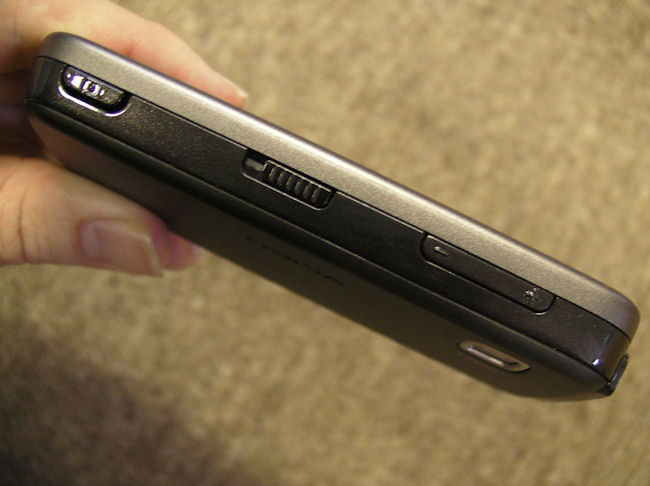
Running S60 5th Edition, the 5230 packs the standard Nokia applications, so you have the Web-kit based browser, which continues to do a competent job in bringing as much of a web site to the handset as possible. It has not really changed over the last year or so, and handles the modern web with ease. Having a touchscreen device makes browsing much more intuitive, from scrolling around the screen with a flick of the finger (the 5230 has kinetic scrolling in most menus and applications) to selecting links.
With the myriad of colours available online, there is one problem in the 5230 that should be obvious to many – in the event of a modicum of strong sunlight, the colours and definition become washed out as the screen turns into a highly reflective piece of real estate.
This is mostly down to the TFT technology used in the screen, and is of a similar quality to many other Nokia touchscreen phones (the N97 classic is the only exception). There's more than enough brightness when indoors or in the sort of weather that Scotland has, but sunnier climates will need to find a shadow during the noon sun to see what's going on. This is made doubly difficult by the themes Nokia have put in the 5230. All of them are white text on a black background (the only change between them is the background image on the main screen and the colour of the cursor highlights), which is the exact opposite of what you need in strong sunlight. Whoops.
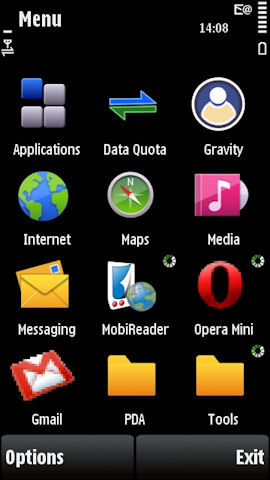
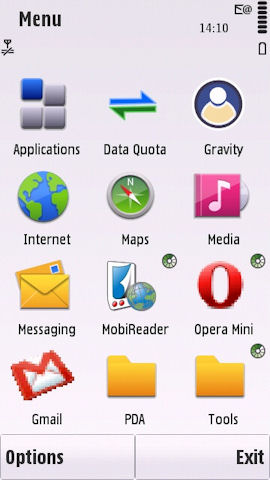
(changing from a default theme to a third party one)
It's not difficult to get a new theme on your phone, as the Ovi Store client is included (as it is in every phone). You will need to be online for this, so again you will rely on that 3G connection.
If you have an existing microUSB cable, then you can use this to make a connection to your PC, but if this is your first peripheral with that connection, then you'll either have to buy the cable separately or connect using Bluetooth - to keep the cost down, Nokia have not put a USB cable in the retail box. This isn't as crippling as it first appears, partly because of the number of USB cables in circulation (either around your house or in the local electronics shop) but also because Bluetooth and Ovi Suite work very well together if your computer is Bluetooth-enabled.
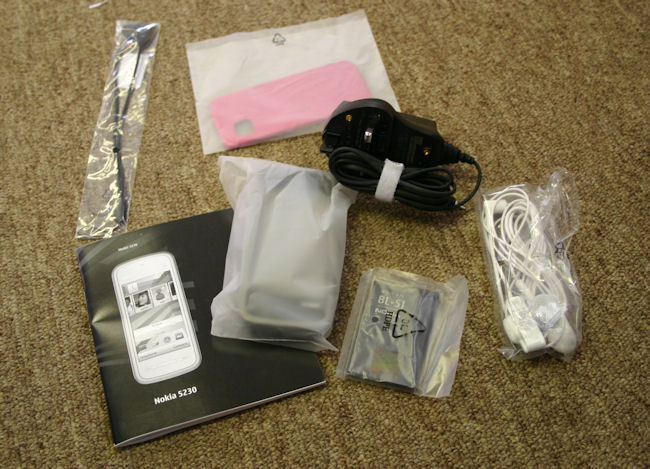
What is in the box is the by now standard eco-charger, which draws as little power as possible, a basic hands-free and headphones combination, and a guitar pick on a bit of string that's the MacGyvered solution to the lack of any space in the 5230's case to store a pointer. To be honest, this is more of a hassle to use, so after about ten minutes I ditched the pick and resorted to the nail on my finger.
And after another thirty minutes, I flipped the finger over and used a nice fat index finger. And the 5230 was sharp enough to work out where I was tapping my finger in the vast majority of cases. Unlike previous touchscreen devices on various platforms, the need for a stylus is much reduced on the 5230. Partly down to the OS being smart enough to decide what is meant to be be pressed, but also because the 5230 screen to very responsive to a light press, so you can get away with a little bit of pressure. The level required is very comfortable, and over the first few days I was conscious of trying to use less and less pressure to activate the screen.
It's not as light a touch as on a capacitive-screened device such as the Nokia X6, but there's not that much to choose between the thresholds. Does the 5230 lose points for being a resistive touchscreen? Only between geeks who study spec sheets. In the real world, it's a touchscreen that works, and arguably the fact a stylus and your finger works could be seen as a plus point in a crowded budget market.
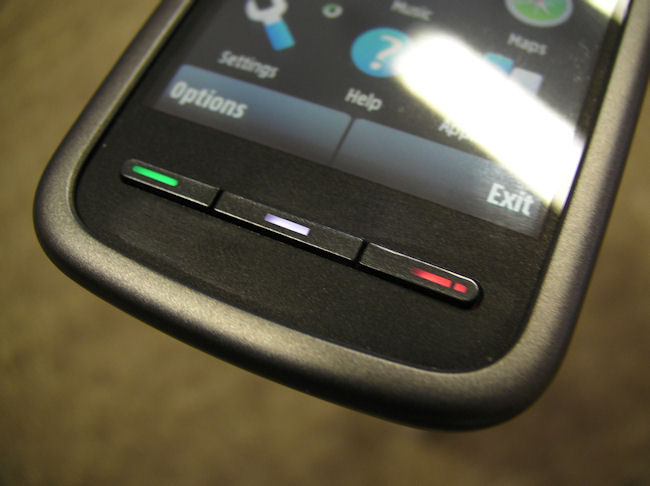
What will let down the touchscreen is not the physical hardware – in common with the Nokia brand, it's solid and dependable, even though the plastics and construction have been done to a fixed (low) budget to make the retail price so attractive, but the S60 interface. As much as can be accommodated, the 5th Edition implementation is... workmanlike. Come in from other S60-based smartphones and the touch paradigm is understandable, but the out of the box experience for anyone new to S60 is going to be very confusing.
Let's throw out some reasons why the new user is going be thinking “what have I bought?” What does a tap do? Depending on where you tap, it could activate an option or an icon, just highlight it, or pop up the scroll bar at the side of the screen. Where are all the settings hiding? (in this labyrinth-like system of icons that look like folders and folders that look like apps). Then there are some dialog boxes that let you use predictive text and some where you can't; multiple keyboard options to enter text, but only in some screens and not others...
It's not pretty. With the 5230 only having a standard load of applications there's not that much cruft in here, and everything's purpose is clear, but the UI could do with a spring clean. This is of course something that Nokia and Symbian are aware of, with Symbian^3 due in the later half of 2010, but that doesn't address any of the concerns of the consumers buying phones now.
If you wanted to be vicious, you could argue that computers are hard to use and as such need this complex interface to ensure everything you want to do can be done on the small screen. S60, for a new user, even on a phone like the 5230 with the basic software bundle from Nokia, needs some time and needs some dedication to learn. If you get over this hump, then S60 is one of the most powerful mobile OS/UI combinations around. Unfortunately, it takes time to get there and phones with simpler UIs (cough... the iPhone) have a much shallower learning curve which rewards playing around. That's graceful. S60 is the dependable builder on a German construction site in the 80s.
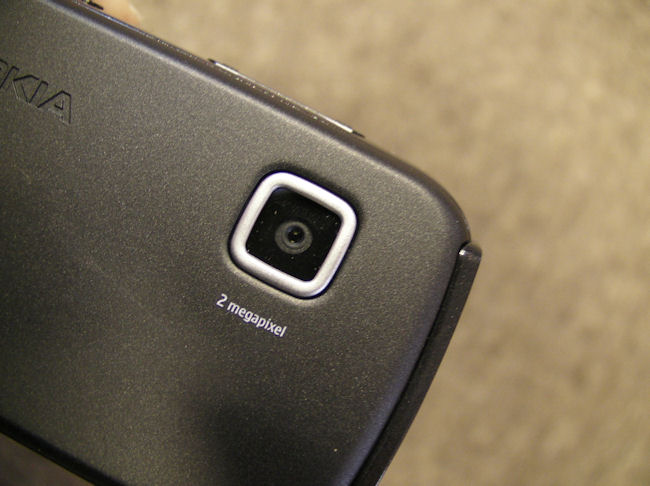
Watch out for the camera – it has the same evidence of cost-conscious decisions. It's a 2 megapixel camera, with a plastic lens. It's not the first Nokia with this lens, and the lens is only one part of the equation in taking good pictures from your smartphone. The Nokia Camera software is some of the most polished of any smartphone, and that compensates to some degree for the lower priced components. The camera itself is a fixed focus camera, so you just point, press the button, and trust the software can work out what you'd like to be in focus. You do have the same picture settings familiar to other S60 users, namely white balance, exposure and ISO speed.
You can get good results out of the camera, as long as you remember to make sure to use settings that give the best look and you take account of the lighting (or so I'm told). This is doubly important on the 5230 as the camera does not have a flash. Outdoor and well lit indoor pictures should not cause too much of a problem, but night time shots are going to be little more than grainy keepsakes.
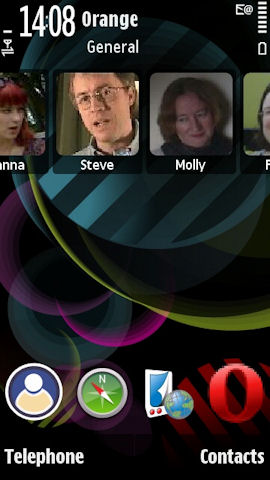
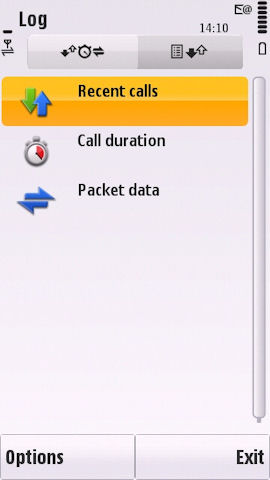
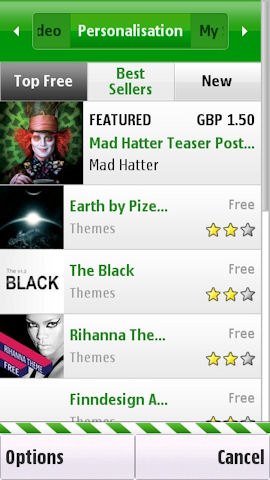
All the familiar niggles you love with the regular S60 apps can be found here, especially the PIM suite of Calendar, Notes and Contacts. It goes without saying that the usual problems in the standard apps are going to be found here in the 5230. While the Notes application is passable because of the low cost of the handset, Calendar is still clunking along with some design mistakes inherited from the 7650, almost ten years ago. I suspect that syncing to Outlook and other Office-based solutions is not as important to the 5230 user as is one for the N97, so the 5230 actually loses less points in a review because of the PIM suite than the aforementioned N97. People are not going to be sitting around with a copy of Outlook and a million contacts that have multiple addresses and phone numbers, they're going to be either moving from another S60 device, or more likely upgrading from a feature phone – in which case contacts on the SIM card is going to be the way forward.
As an aside, one of the features of the phone that many people on my US trip thought was a nice touch was the Contacts bar on the home screen – this is where you can add your favourite contacts, flip horizontally through them all with a quick finger flick, and then have quick access to the flow of messages, calls and emails you have made to that person. Alongside that are icons to quickly call or message the person (be it text, MMS or e-mail) or view an associated RSS feed. It's smartly integrated into the phone, it provides a useful function, and this river of info from your close friends was appreciated by many.
I think that most users will take up many of Nokia's Ovi services. Let's start with Ovi Sync and Contacts, because this is one you spend a lot of time in while using the phone, and has the data that many consider crucial – the aforementioned names and addresses. Having an almost one touch (go to Tools – Settings – Connectivity – Data transfer – Sync, it's easy! - see what I did there, that's sarcasm in action) answer to backing up your data remotely, but also available to other phones and yourself if you go online, is a practical service that should be an easy sell to someone new to the 5230.
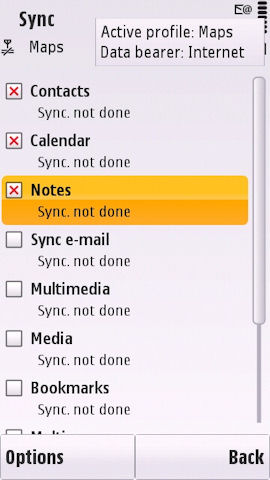
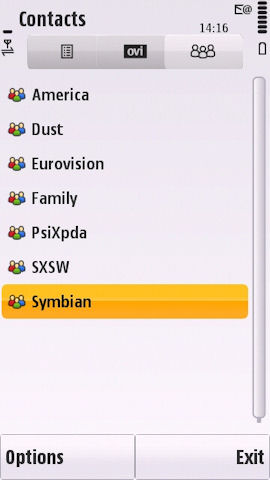
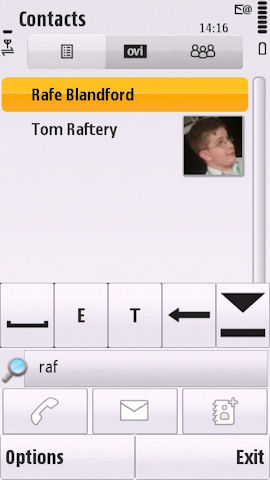
And once you're through that door then the chances of you using the other Ovi Services are much increased. I've already mentioned the Ovi Store for more applications and themes for the device, but the other two biggies are the Music Store and Ovi Maps.
While the flagship Comes with Music platform and its “download all you can listen to for a year” is not in the package, the 5230 still has access to the full regional content of the Nokia Music Store, and tracks for 79p and upwards, with countless albums and singles from across the musical generations. There's a PC client you can use for the full browsing experience, or you can grab tracks from the mobile client with almost as much ease.
Nokia's Music Store efforts never seem to get the press that they deserve - they've pulled off negotiations with all the major labels and numerous smaller Indie labels to get the into the store. You can get albums or individual tracks at the same price as other online stores, and it's available on the handset, or on your home computer, seamlessly. You want some music? There's a good chance you can get it through your phone or onto your phone in just a few steps. That it just works and sits there is a testament to how simple and effective an idea it is.
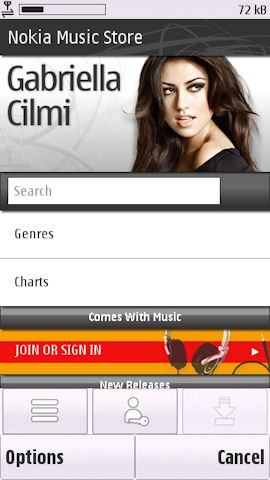
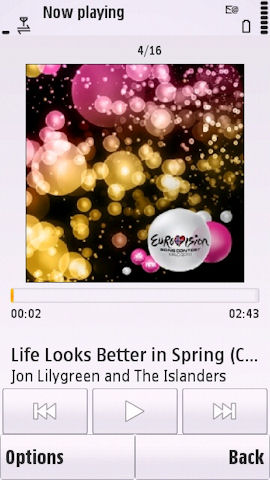
There's only a mono speaker on the 5230, so if you want to listen to music in a room, as opposed to using headphones (via the 3.5 mm audio port), you'll be transported back to the sixties. Being honest, once you step a little bit away from the phone you wouldn't get any stereo effect in any case, so this is one of those sacrifices that hits the spec sheet but not the practical use.
The other area of Ovi, Maps, might not be as sexy but is probably the greatest value in the 5230 package. As the handset has a GPS built in, and Nokia have released all the Ovi mapping services for free, including real time turn by turn navigation, what you have in the 5230 is a fully enabled “Satnav” with free maps for pretty much everywhere in the world. And if you want to keep your bandwidth usage down, then you can use your computer to 'side load' the mapping data onto the handset beforehand. GPS performance is good, but for usable GPS 'lock' times you will need the 'assisted' part, which requires a data connection, albeit only a few tens of kilobytes per week.
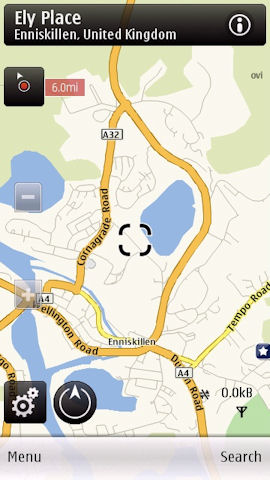
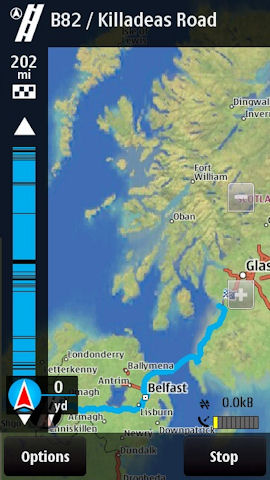
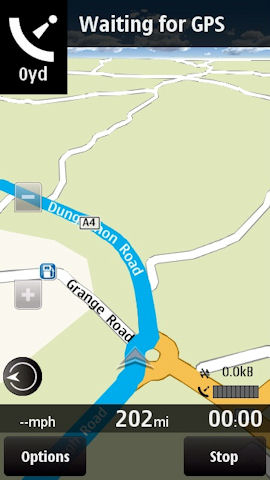
Which brings up the last missing piece of the equation, at least in the regular retail box. The 5230 only comes with 70MB or so of storage on the C: disk, and while there is space for a microSD card to be added, Nokia aren't shipping one as standard. Without this extra storage, music, maps, pictures and video will be fighting over an ever-decreasing amount of storage. To make best use of the 5230, you will need to get a microSD card of some description.
Buy the handset from a network operator and I'd expect to see one in the bundle, witness yesterday's offer from T-Mobile that included six months of data and an 8GB microSD card. The addition of a decent sized card and a sensible data plan turns the 5230 into a highly competitive package. You can pick up 8GB microSD cards from around £15 online.
It's not a package that is going to get a lot of friends among power users. The compromises, while not having a huge impact on use in the real world, are going to be picked over and compared to phones that are three or four times the cost of the 5230. If you go looking for those areas – the mono speaker, the plastic camera lens, the lack of a decent stylus, the lack of Wi-Fi, etc. – then you will find fault with the 5230.
But this isn't a full priced flagship. It's a bulk handset, designed to get Symbian into as many hands as possible. The price point is a killer. It's a perfect entry phone for new users to Symbian – not so high that you would be scared away but low enough that you're happy to shell out to find out what the fuss is all about. It makes a perfect second phone to have to loan out to friends, have around as an emergency phone, or take away on trips, knowing that if something happens to it then you've not lost a huge investment and the phone is easily replaceable.
Heck, it's chap enough that you could buy it as a Sat-Nav for your car, ignore all the other functionality in it, and still come out ahead compared to a dedicated GPS unit.
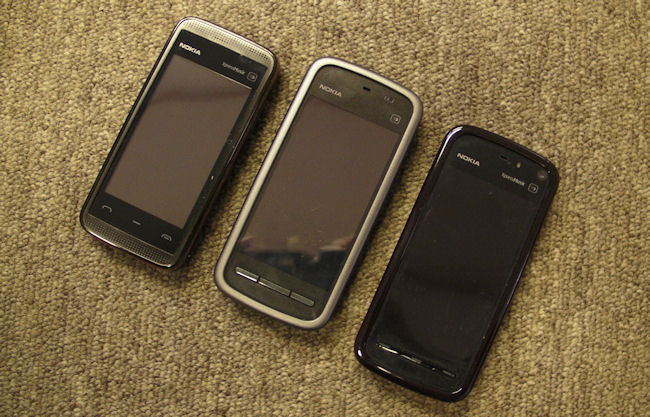
Nokia 5530, 5230 and 5800
So the 5230 is currently an anomaly in Nokia's line up. It's missing some key features that have been on all the recent S60 phones, yet if you give it a fair chance, you'll be rewarded with a nice nippy smartphone in your pocket. In the long term view, I think this is destined to be Nokia's entry level touch-based smartphone. If you move up a little bit higher, models are available with Wifi substituted for the GPS (Nokia 5530), or even the 5800 that has WiFi, GPS, and the improved camera lens from Carl-Zeiss. So everything in a nice, stepped progression.
You need a good first step though, and there's no doubt that the 5230 is exactly that. The power users may view it with disdain, but this isn't S60 with stabilisers, it's a perfectly priced entry level smartphone.
Now to see how many millions it sells.
Ewan Spence, March 2010
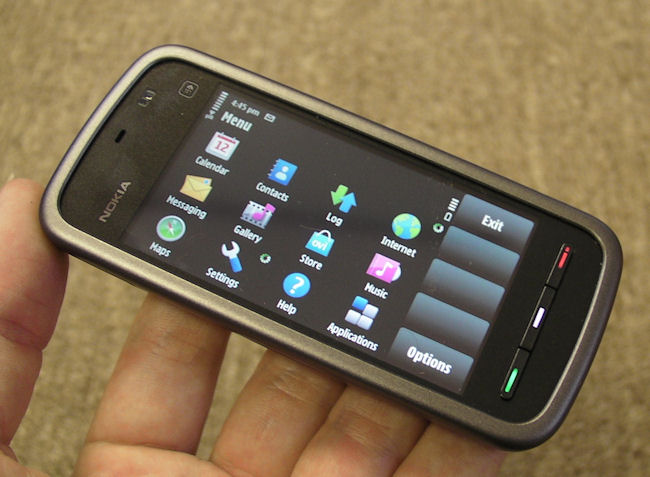
Reviewed by Ewan Spence at
